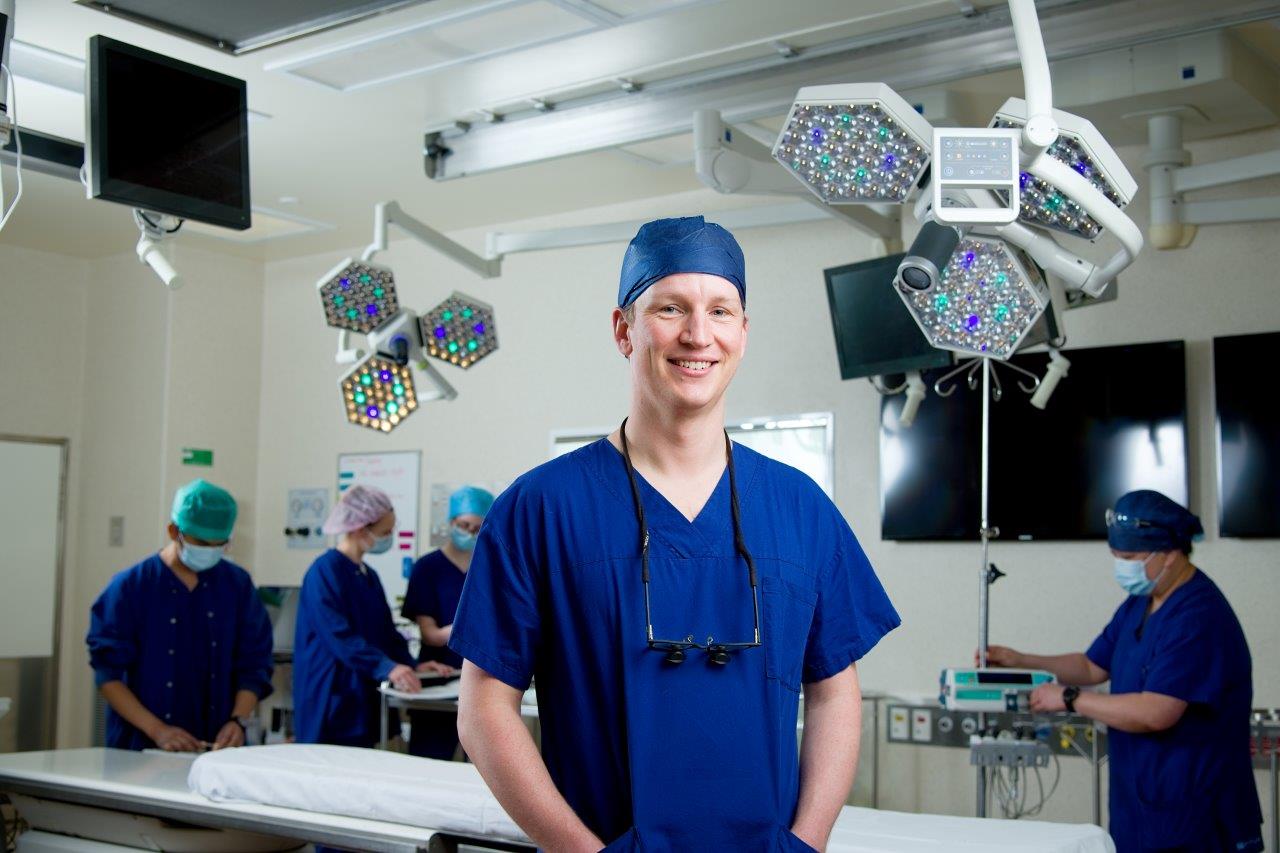Sweet solution to deadly condition
07/07/2023

The vascular team at Cabrini Health have performed an Australian-first procedure to offer a simpler treatment option for patients with aortic dissection, a life-threatening condition.
Aortic dissection occurs when the layers of the aorta (the body’s main artery) split, which allows two channels of blood flow to form in the artery – one which flows in the true channel (where blood is meant to flow), and one which flows in the false channel (between the layers of the aortic wall). This can cause issues with blood flow to different areas of the body; but in the long-term, can also cause the aorta to enlarge to form an aneurysm.
Patients with aortic dissection often have multiple procedures to deal with issues which arise from the dissection. This can involve cardiothoracic surgeons, who replace a segment of the aorta in the chest, and vascular surgeons, who deploy stents (tubular structures covered in fabric) through the chest and sometimes abdomen to keep blood flow confined.
The new treatment option known as the Candy Plug technique is a device designed to simplify treatment for patients by avoiding the need for more complex abdominal stenting procedures, which carry with them more risks.
The first three procedures using the device in Australia have been performed at Cabrini Hospital by Charles Milne, vascular and endovascular surgeon.
“The Candy Plug technique can be used in a subset of patients with aortic dissection, with the aim of simplifying their treatment pathway, and reducing the risks that come with more complex intervention.”, Mr Milne said.
“There are a number of potential benefits, which include a simpler approach to treatment with reduced risks to the patient, reduced procedure time, and reduced radiation exposure to patients and staff (which comes with more complex aortic procedures).”
Mr Milne said that so far all three Cabrini patients have had positive outcomes.
“The first patient had the procedure performed in 2020, and has had a very successful outcome at the three-year follow up mark. The two most recent patients have had their procedure within the last six months, so we are still waiting for their 6 and 12 month follow up scans to accurately assess their outcomes; but the procedures went very smoothly.”
“We are able to offer treatment for complex aortic procedures at Cabrini Hospital due to the unique expertise of staff in the hospital. This includes the team in theatre, ICU and the ward.”
“We also have access to the latest technologies, including fusion software (which superimposes the patient’s CT images on top of our x-ray images in theatre). This reduces procedure time, contrast dose and radiation exposure, making the procedures safer to perform for patients and staff.”